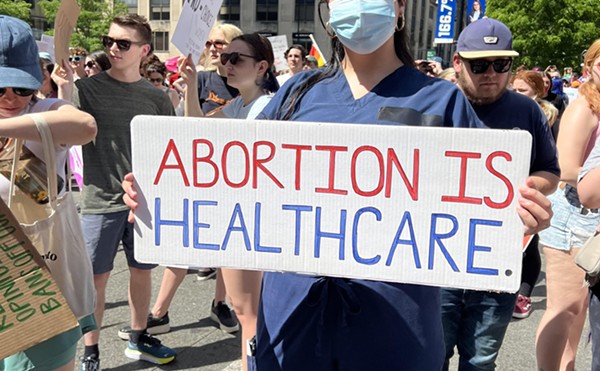|
Taxpayers likely will foot more of the bill to build the long-stalled Banks housing and shopping district along Cincinnati's riverfront. In return, local officials and developers want to build a much larger project than originally envisioned.
The Cincinnati Planning Commission last week recommended approval for several changes sought by developers in the master plan for The Banks. They include doubling the development space allowed at the 17-acre site from 1.4 million square feet to 2.8 million square feet.
To achieve that goal, height restrictions on buildings in most of the riverfront area would be increased from 16 stories to 30 stories.
Cincinnati City Council and the Hamilton County Commissioners will make the final decision on the proposed changes. Both groups have indicated their support, and a vote is likely by Sept. 12.
"I definitely think the heights need to be increased," says County Commissioner David Pepper. "Without the right density, the project won't work. At the end, this thing has to make sense financially, or it won't get done."
Higher subsidy
The proposed changes include divvying up the extra space by increasing the amount of residential space from 745,000 square feet to 1.8 million square feet, increasing retail space from 300,000 square feet to 400,000 square feet, increasing office space from 200,000 square feet to 1 million square feet and increasing hotel space from 200,000 square feet to 400,000 square feet.
As part of the county's lease with the Bengals for Paul Brown Stadium, the team controls building heights for structures built near the football stadium, in an effort to preserve view corridors. County officials will have to persuade team executives to allow changes there, Pepper concedes.
"Obviously, that will have to be something that will be negotiated with the Bengals," Pepper says.
He says he believes the team will be more amenable now that the county's anti-trust lawsuit against the Bengals is dropped. Those negotiations don't have to be completed before the project is begun, he says.
"The first phase doesn't include those buildings," Pepper says.
The changes to the master plan give some insight into the deal being privately negotiated between the Banks Working Group, a county advisory panel, and the two developers selected for the project.
The latest deadline for agreeing to a contract between the developers — Carter & Associates Commercial Services and Harold A. Dawson Inc., both of Atlanta — and Hamilton County expired Aug. 13 without a document finalized. This is the second deadline that the Banks Working Group has missed this year.
The panel, formed by Cincinnati and Hamilton County officials last year, initially set a Feb. 15 deadline for completing contract negotiations. When it became obvious last winter that goal wouldn't be met, the panel granted a six-month extension.
But the Banks Working Group issued a press release last week stating that, although progress was occurring, a final agreement hadn't yet been reached. Perhaps wisely, the panel avoided setting a new deadline this time.
Besides doubling the project's size, the amount of public subsidies proposed for The Banks has increased by more than $42 million, up to nearly $110 million from the previously announced total of $65 million.
With officials now touting The Banks' price tag as roughly $600 million, that means taxpayers will foot about 18.3 percent of the project's cost — excluding money already spent to build new Reds and Bengals stadiums, redesign Fort Washington Way and install infrastructure such as sewers and new roads along the riverfront.
"My sense is, given the project's costs, that subsidy is what ultimately is needed to make the project happen," Pepper says. "Hopefully, it won't turn out to be that much. That's the upper limit."
To garner public support throughout the mid- and late 1990s, when The Banks proposal was being drafted, bombastic area officials regularly called the riverfront site the most prime piece of undeveloped commercial real estate in the nation. At the time they said the parcel would be highly attractive to developers, who would put up much of the money needed.
Hamilton County officials now say the additional subsidies are needed to get the project moving forward.
Profit sharing
Once the Banks Working Group began examining the project closely, it became clear that earlier figures were unrealistic, Pepper says. Construction costs in the past were too low, and the amount expected to be generated through tax increment financing — using taxes generated by the completed project to help pay debt — were too high.
Under the latest deal, the county could recoup some of its investment in the future. Developers will offer Hamilton County a 15 percent share of profits if the project is successful and certain goals are met after investors are paid off.
In fact, the doubling of the project's size is mostly an effort to increase the profit margin. In addition to allowing taller buildings, in order to increase developable space the latest proposal would add an extra block to the project that originally was slated to be part of a park.
Also, the deal being negotiated allows the developers to build The Banks over a 22-year period, if necessary. Carter and Dawson have indicated it can be completed in about 15 years but want the extra time as a precaution. That's also a shift from original plans, which called for The Banks to be built in phases over a decade.
First proposed in 1999, The Banks project is a multi-use project that would be built between the Reds and Bengals stadiums. It's planned to include a mix of condos, offices, shops and a hotel next to a large riverfront park.
The project was delayed during the past few years due to funding and jurisdictional issues, particularly who will pay for up to $81 million in parking garages and other improvements needed to lift the development above the Ohio River flood plain. County sales tax revenues were supposed to pay for the garages but are far below initial projections.
Initially, officials predicted that portions of The Banks likely would be completed in 2004 and 2007, then later revised that timetable to 2005 and 2008. Later still, officials pledged that dirt would be turned at the site beginning in spring 2006.
Now construction is slated to begin in April. ©





